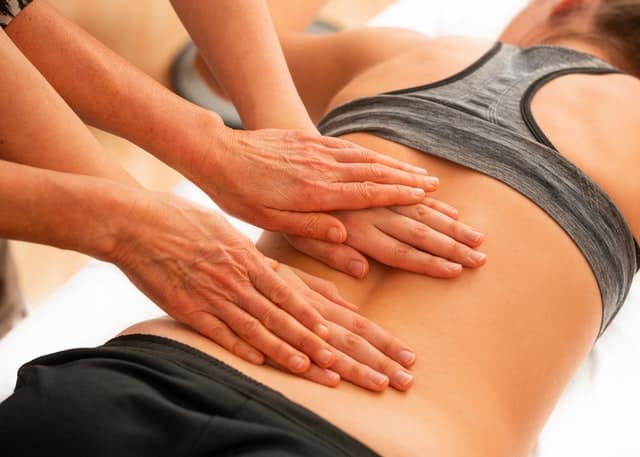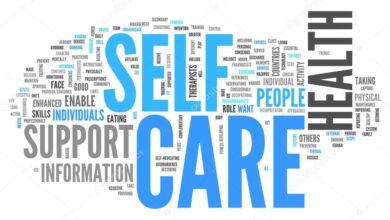How Do You Distinguish Between Muscle Pain and Joint Pain?
Deprecated: preg_split(): Passing null to parameter #3 ($limit) of type int is deprecated in /home/dailwtkh/public_html/wp-content/themes/jannah/framework/functions/post-functions.php on line 863

Because they affect the same body portions, it can be difficult to distinguish between bone and muscle pain. The intensity of the pain may also be comparable. On the other hand, Bone pain is typically more intense, painful, and disabling than muscle pain.
Unlike muscle pain, bone pain can continue for a long time and require more medical attention. On the other hand, muscle pain has a more “generalized” feeling and is more difficult to pinpoint.
Anyone experiencing excruciating pain and discomfort that has lasted more than 48 hours should get medical attention from a professional. Orthopedists and orthopedic surgeons are both medical specialties that focus on the musculoskeletal system.
What Causes Musculoskeletal Pain?
Disorders of the bones, joints, muscles, tendons, ligaments, bursae or any combination of these can result in musculoskeletal discomfort. The most prevalent cause of pain is injury.
Bone Pain
Deep, piercing, or dull bone pain is common, and in most cases, it is the outcome of an accident. Osteomyelitis, hormonal imbalances, and malignancies are less prevalent causes of bone pain.
Muscle Pain
However, myalgia, or muscle pain, can be just as debilitating as bone pain. Several different types of cramps and muscle spasms can cause a charley horse, such as those that occur in the calf (a persistent painful muscle contraction). Injuries, loss of blood flow to the muscle, infection, or tumors can all cause muscle pain. Chronic pain and stiffness in the upper and lower back, neck, and hips are all symptoms of polymyalgia rheumatica.
Tendon and Ligament Pain
Unlike bone pain, tendon and ligament pain is usually far less severe. Swelling of the afflicted tendon or ligament might be described as “sharp” and is generally reduced by resting the affected area. Tendinitis, tenosynovitis, lateral epicondylitis or medial epicondylitis, and tendon injuries are common causes of tendon pain. When a ligament is injured, it’s the most prevalent source of discomfort (sprains).
Bursae Pain
As with any other type of muscle pain, bursae pain can be caused by various factors. Around joints, bursae act as a cushioning sac filled with fluid. Pain is usually worse when the bursa is moved and is alleviated while the bursa is resting. The bursa may bulge if it is affected.
Joint Pain
Joint inflammation is not always the cause of joint pain, referred to as arthralgia (called arthritis). Arthritis can produce both pain and swelling, depending on the severity of the condition. Arthritis can be caused by various conditions, including rheumatoid arthritis, osteoarthritis, infectious arthritis, gout, autoimmune illnesses, vasculitic disorders (such as immunoglobulin A–associated vasculitis) osteonecrosis, and damage to the part of a bone inside a joint.
There are two types of arthritis-related pain: acute and chronic (chronic, for example, when caused by rheumatoid arthritis or osteoarthritis). Osteoarthritis pain usually worsens when the affected joint is moved, but it can also be felt even when it is not moved. There are occasions when nearby structures, including ligaments, tendons, and bursae, cause discomfort that appears to originate in the joint.
Fibromyalgia
Muscle, tendon, and ligament pain are all possible symptoms of fibromyalgia. In most cases, the pain is felt or produces sensitivity in various places, making it difficult to pinpoint the exact source. Additionally, exhaustion and poor sleep are common among those with the disease.
Other Causes
Compression of nerves occurs as a result of several musculoskeletal problems. Tunnel syndromes are one example of these conditions(carpal tunnel syndrome, cubital tunnel syndrome, and tarsal tunnel syndrome). When a nerve is irritated, pain radiates outward and excruciatingly hot. A tingling sensation, numbness, or both may accompany it.
In certain cases, pain that appears to originate in the musculoskeletal system is caused by a disease in another system. So, for example, a lung, spleen, or gallbladder issue could be the source of shoulder pain. An abdominal aortic aneurysm, pancreatic inflammation, and pelvic problems induce back pain. A heart attack could be the source of arm pain (myocardial infarction).
Diagnosing Musculoskeletal Pain
Doctors begin their procedure into musculoskeletal pain by determining:
- Just how many joints are involved, and which ones.
- Involvement or non-involvement of core skeletal structures.
- Any joint pain, no matter how severe or long-lasting.
- What things help or hurt when it comes to pain?
- In what organs is the disease manifesting itself?
Identifying these elements provides crucial insights into what type of disease is causing the discomfort. Doctors do a physical exam to identify these and other variables that may point to the source of the patient’s pain.
The sort of pain may indicate where the discomfort came from. A musculoskeletal issue, for example, is indicated by pain that intensifies with movement. Pain accompanied by muscle spasms indicates that muscle tissue is to blame (sometimes a chronic spinal cord injury).
When a doctor palpates the area (for example, a joint, ligament, or bursa) or passively moves a joint, the position of swelling or tenderness often suggests the source of discomfort. However, these qualities of pain are not always indicative of the source or origin of the pain in question.
The existence of other symptoms, physical examination findings, and results of laboratory testing and x-rays are typically used by clinicians to make a precise diagnosis. Joint pain and swelling and bull’s-eye-like rash are common Lyme disease symptoms, and blood tests demonstrate antibodies to the bacterium responsible for the condition. Pain, swelling, and redness in the big toe or other joints are hallmarks of gout attacks. When examined under the microscope, uric acid crystals are commonly found in joint fluid.
Treatments And Home Remedies
Your musculoskeletal pain’s underlying cause will determine the course of your treatment. Standard therapies include:
- Chiropractic adjustment
- Applied kinesiology.
- Physical Therapy.
- Injections of steroids.
- Massage therapy.
Musculoskeletal pain can be managed at home with the help of your doctor. Among the possible recommendations are:
- Hot and cold therapy.
- Painkillers can be purchased over the counter.
- Exercises to build strength and endurance.
- Doing stretches
- Techniques for coping with stress.
Book an appointment now to answer all your queries. You can book an appointment with the best Orthopedic Surgeon through Marham.
Frequently Asked Questions (FAQs)
1- What does joint pain feel like?
Hands, feet, hips, knees, and spine are commonly affected, and they can be persistent or intermittent. A stiff, achy, or aching joint can occur. A scorching, throbbing, or “grating” sensation is common.
2- Can arthritis feel like muscle pain?
Muscle pain is a common symptom of fibromyalgia, myositis, and polymyalgia rheumatica. Muscles may ache if they are weak from lack of use or support arthritis joints.
3- When does arthritis hurt the most?
Joint pain is a common sign of this condition. It usually hurts when you use the joint or when you wake up, and the ache often worsens at night.





